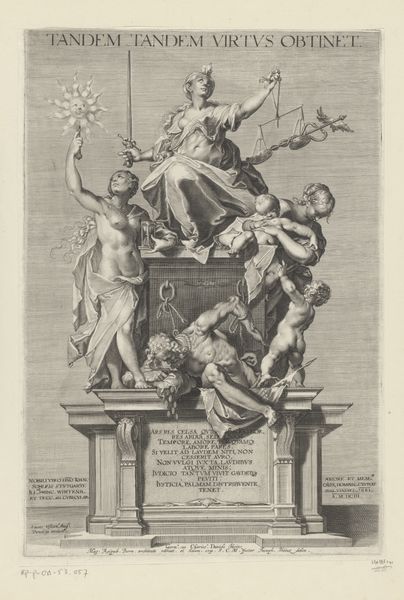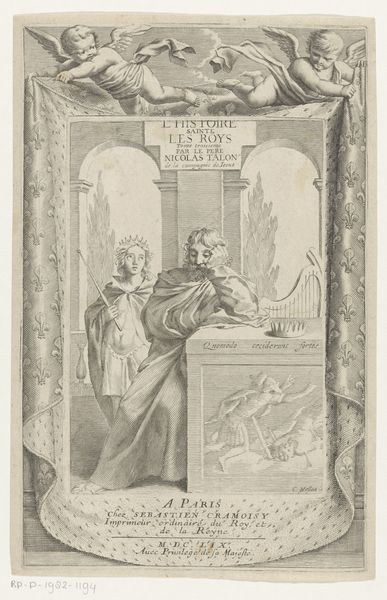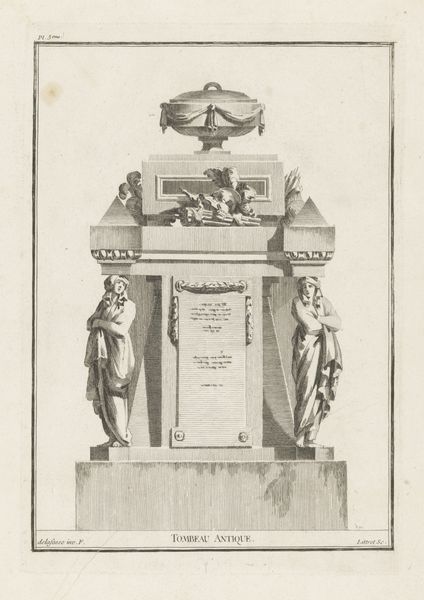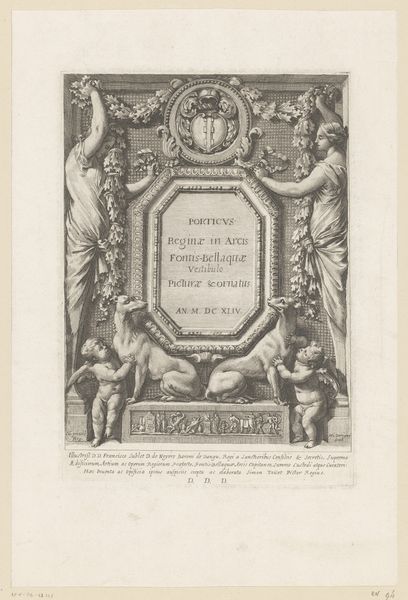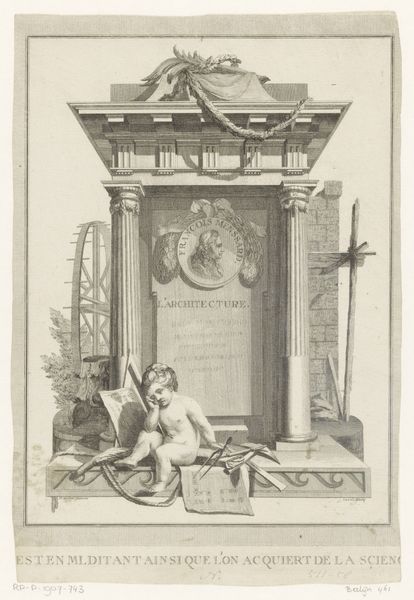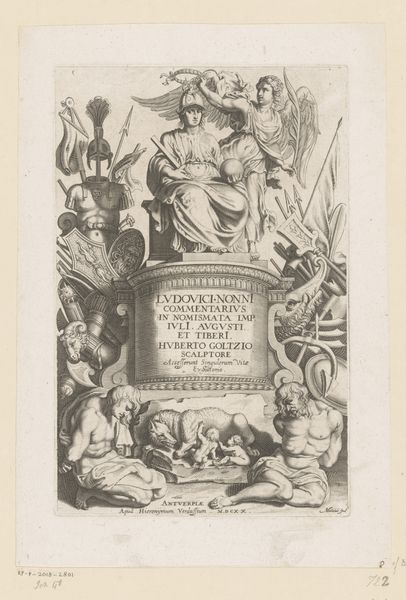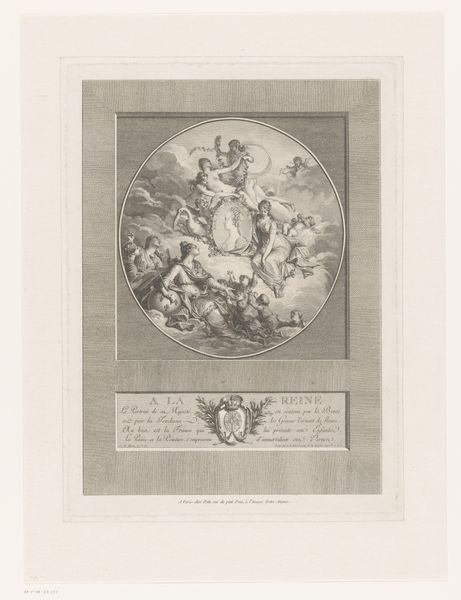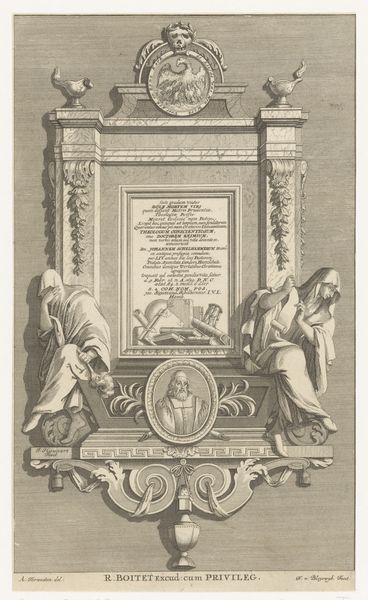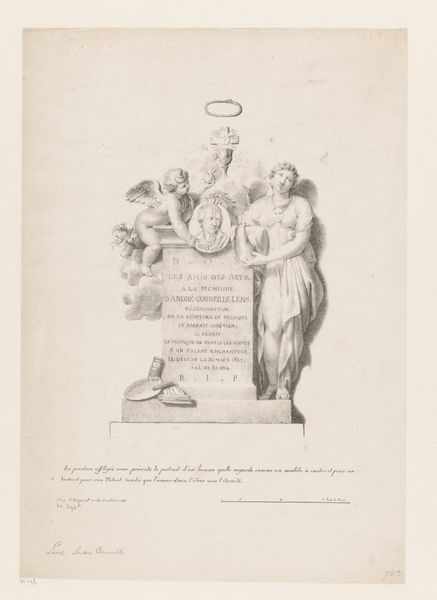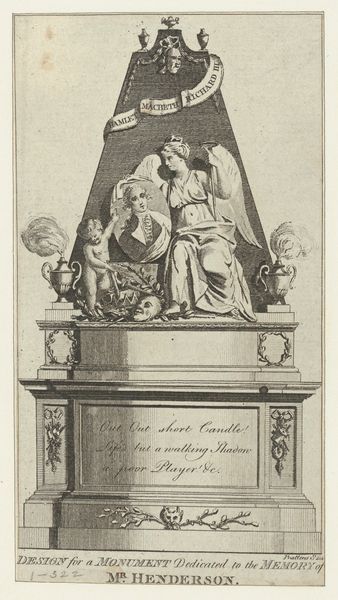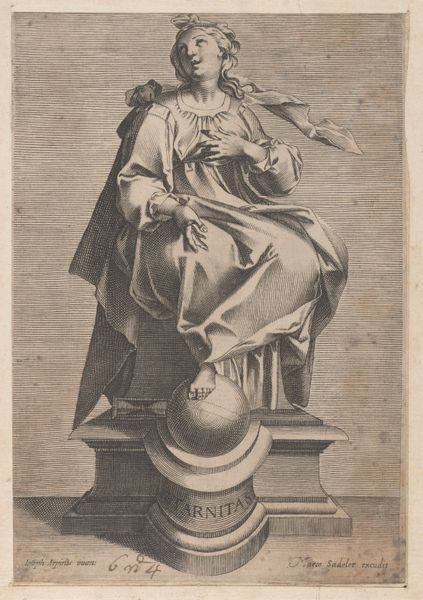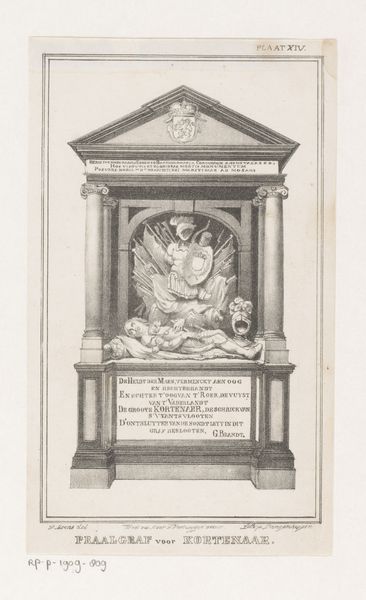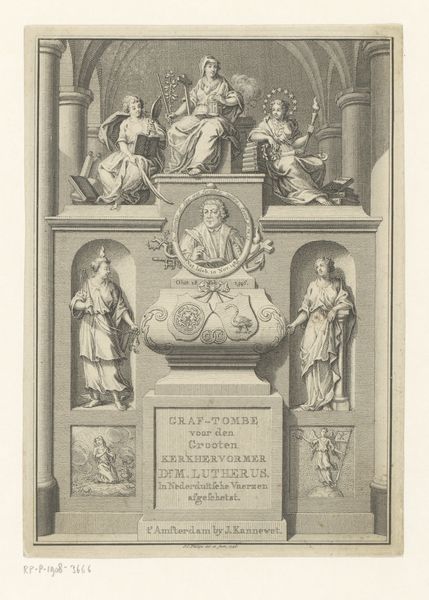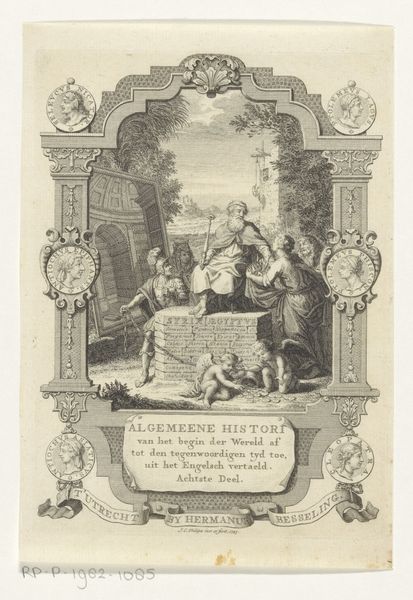
Grafmonument van Nicolaas Vleughels in de San Luigi dei Francesi te Rome 1744
0:00
0:00
sculpture, engraving
#
portrait
#
baroque
#
old engraving style
#
historical photography
#
sculpture
#
academic-art
#
engraving
Dimensions: height 404 mm, width 203 mm
Copyright: Rijks Museum: Open Domain
Editor: This is "Grafmonument van Nicolaas Vleughels in de San Luigi dei Francesi te Rome," an engraving from 1744 by Claude Olivier Gallimard. It depicts a sculpted memorial. It’s quite formal and the detail is astonishing for an engraving. What do you make of this piece, looking at it from your perspective? Curator: What I see here is a record of artistic labor, not just in Gallimard's engraving, but also in the original marble sculpture by Michel Ange-Slodtz. We see layers of production: the sculptor’s original concept, translated into stone, and then re-presented through the engraver's hand. It highlights how art is disseminated, made accessible through print. How does the engraving process itself inform the meaning of the work, in your view? Editor: It definitely makes it more reproducible and therefore more accessible. While the monument is physically fixed in Rome, this engraving allows the image, and perhaps the reputation, of Vleughels to circulate more widely. So, are you suggesting that the material reality of the engraving is as important as the subject matter it depicts? Curator: Precisely! Consider the socioeconomic implications: Who commissioned it? Who purchased the engravings? It served as a tool for preserving and spreading reputation but also sustained various artisans through commissions. Each stage represents economic exchange and creative labor. What is your sense of that relationship? Editor: I never considered the economic side so directly, but it does seem crucial. It links the artistic representation to a broader system of patronage, production, and consumption. Both sculptors and engravers would have been part of an artistic ecosystem sustained by aristocratic patrons such as Vleughels. Curator: Exactly. Examining the material conditions reveals the social fabric that made such art possible, beyond the purely aesthetic appreciation of the artwork. Editor: That gives me a whole new framework for analyzing art. Thank you. Curator: My pleasure. Thinking about the materials and production opens a window into understanding artistic practices and their broader impact.
Comments
No comments
Be the first to comment and join the conversation on the ultimate creative platform.
